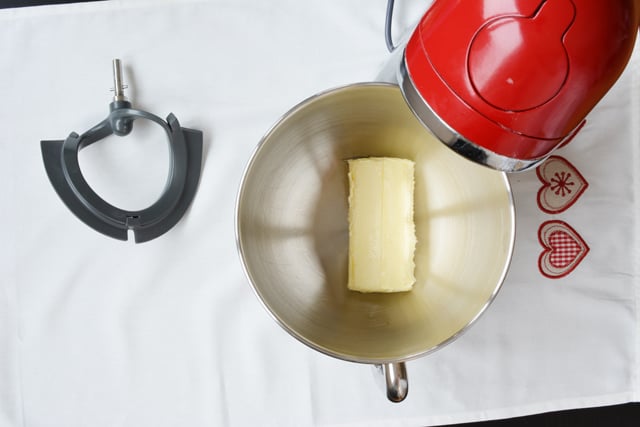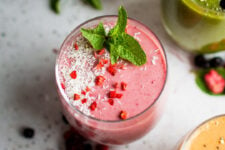Buttercream frosting is probably the most common cupcake topping, and is quickly replacing fondant and royal icing as a bigger cake covering. With its versatile flavour options, you can get more creative with buttercream than with any other frosting. I love piping different designs onto cupcakes to reflect different styles. The consistency needs to be just thick enough to hold a shape, but soft enough to still be fluffy and light. Here are my top tips for ingredients and method to achieve the perfect, pipe-able frosting!
Ingredients
I find a 2:1 ratio of icing sugar to butter (in weight, not volume) plus 2-3 tbsp liquid (such as milk) to provide the best consistency. However, the humidity and temperature of where you live always makes a difference, so start with 1 tbsp of liquid, and add more until you have the right consistency. For example, I would start with:
100g Butter
200g Icing Sugar
2-3 Tbsp Milk (add 1 Tbsp at a time)
Flavourings (vanilla extract, orange zest, lemon zest etc)
Important point… the butter MUST be at room temperature. If the butter is too cold, it won’t whip up properly, and if it is too soft, it will become too liquidy and you’ll end up with a melty mess instead of frosting. At room temperature, the butter should still be solid, and when you press it with your finger, it should make a dent with a little resistance.
Should you sieve the icing sugar? Maybe I’m going against the grain here… but I say… no. The reason? Well, if you’re using a stand alone mixer like my K-Mix pictured above, that sugar is going to get BEAT, for a solid 6 minutes, so any lumps are literally forced out of it. I just find the sieving an unnecessary step, however if you want to, go ahead.
Process
Right… now onto the important part! The best thing I have ever learnt about buttercream is not to rush it. The first thing we are going to do is put the butter in the stand mixer, put it on a high speed, and leave it for 5 minutes. The picture below shows the butter after 1 minute on the left, and after 5 minutes on the right.
See how much whiter that butter on the right is? And that is after only 5 minutes. You want that nice pale aerated butter as the perfect base for adding the sugar. Not only is it whiter, but it’s softer too.
Add the icing sugar in 3 or 4 additions, mixing on an absolutely minimum speed in between until it’s fully incorporated. This will avoid you having a huge sugary cloud in your kitchen! Once all the sugar is incorporated, beat on high speed again for a further 5 minutes.
After 5 minutes, add the liquid 1 tbsp at a time, and beat on a high speed for a while and add more if needed. You should be left with a silky smooth frosting which can hold its shape but isn’t stiff. If you are adding more flavourings (such as zest or vanilla extract), add it at this stage. If you want to make a lemon or orange buttercream, replace the milk with orange/lemon juice instead.
One final mix, and there you have it! The perfect buttercream. Fit for piping, cake covering, or just eating with a spoon straight out of the bowl. I mean… someone has to test if it’s ok right?
[cta id=”2723″ align=”none”]
If you want to try out some recipes, I have some Lemon and Raspberry Cupcakes, some Chai tea cupcakes and a Chocolate Praline cake… just for starters!












